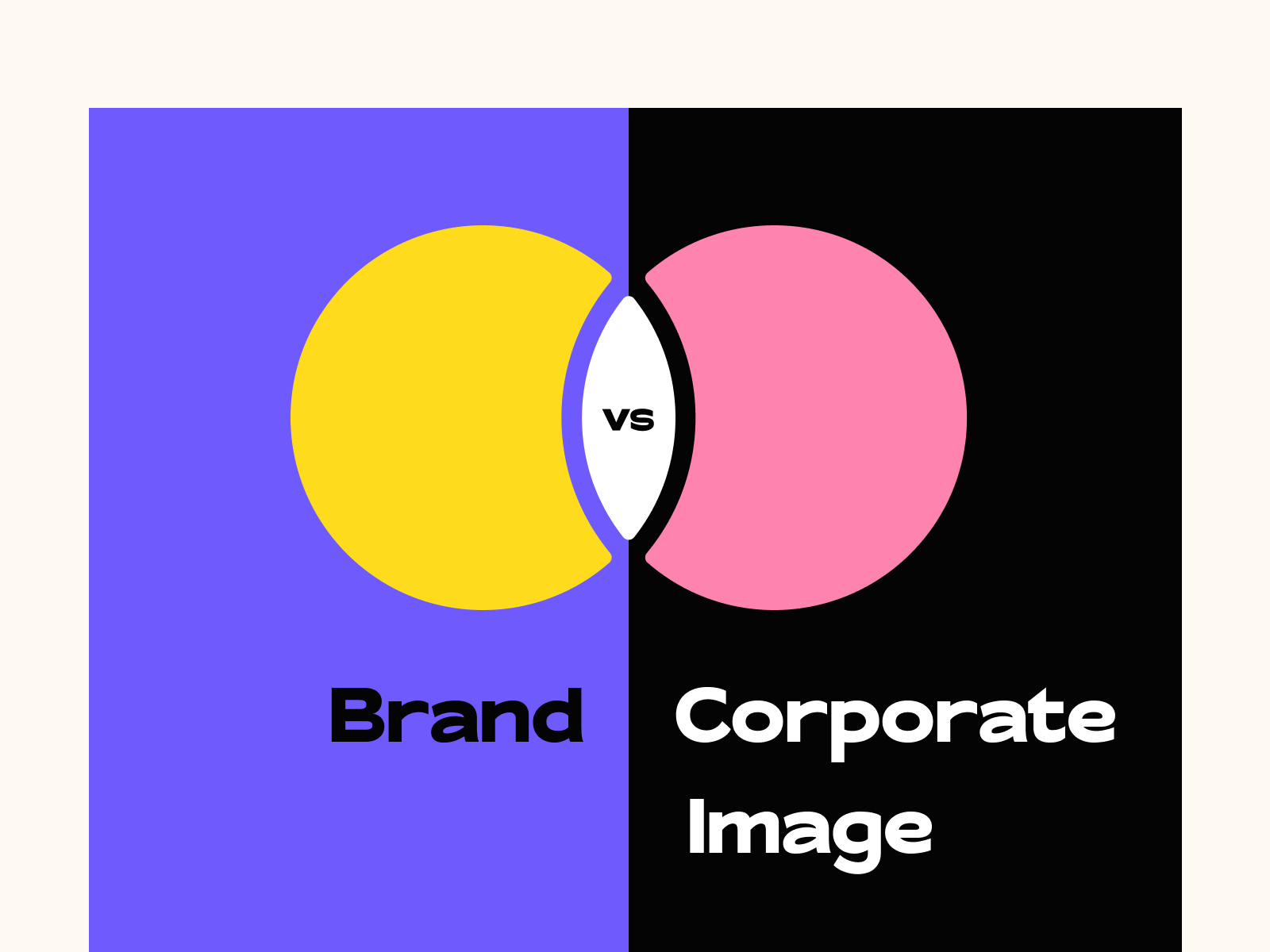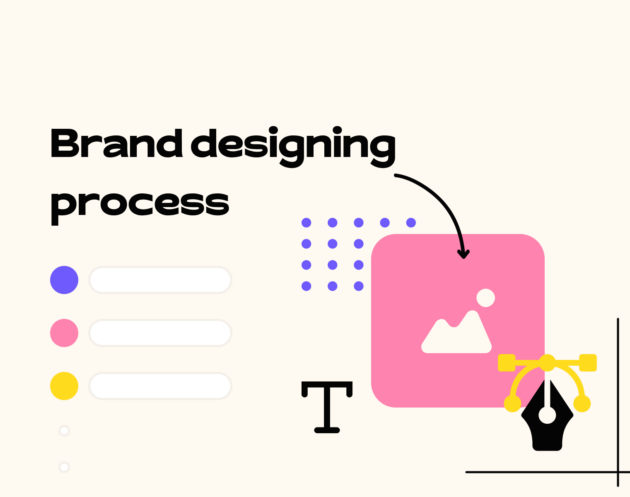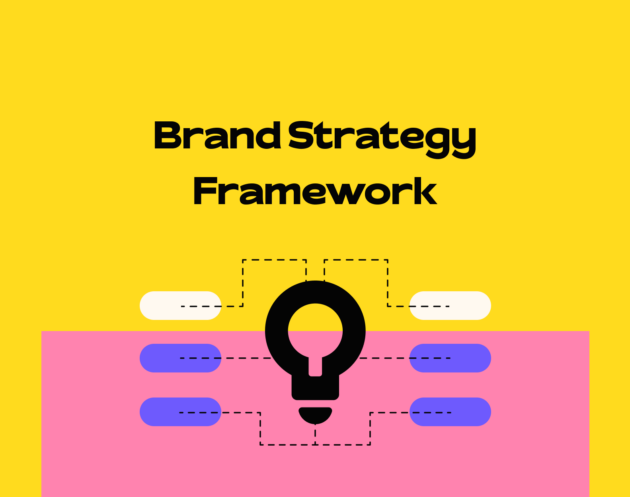Marketing success now depends on more than just offering exceptional services or products. With social media kicking in, it’s more than important to create a lasting impression that hooks the hearts and minds of your potential customers.
And to pose that impression, corporate identity and brand identity are used. While these terms may be used interchangeably, they differ and play diverse roles in shaping an organization’s reputation.
Corporate identity includes the company’s visual elements, including logos, typography, and overall design, used on its promotional channels. This holds the company’s mission, values, and core statements.
In contrast, brand identity is how the company positions its brand or product lines in the minds of the consumers.
In simpler words, an organization has a single corporate identity but can have multiple brand identities in terms of different products.
Though these concepts are different, you get better-integrated marketing communication, efficient resource utilization, and enhanced customer perception when they team up.
That’s why it is important to get a hold of both.
In this article, we will explain what is the difference between brand and corporate image. And the benefits they bring to the table. So let’s get started.
What is Brand Identity?
Have you noticed why when entering the supermarket, you rush straight to the particular brand, throw them in your basket (sometimes without even checking the price) and check at the billing counter with flashing credit cards?
Or why do long queues get aligned when Apple announces the launch of its new iPhone a day before?
Well, this is what a solid brand identity does. It shapes the consumers buying persona and gives a satisfactory answer to why your brand is the best in the market. Here’s a more detailed definition.
Brand identity is a combination of visual, emotional, and verbal elements that develops and positions a buying perspective in the target audience’s minds.
- It gives your products, company, or services the competitive edge to distinguish in the market.
- It gives your target audience an instant answer to “How your brand can solve their problems?”
But it’s more than rapping fancy packaging around your product. A brand Identity is a mix of different elements, including:
- Logo
- Color Palette
- Typography
- Voice and Tone
- Imagery and Visual
- Messages and tagline
- Branding Guidelines
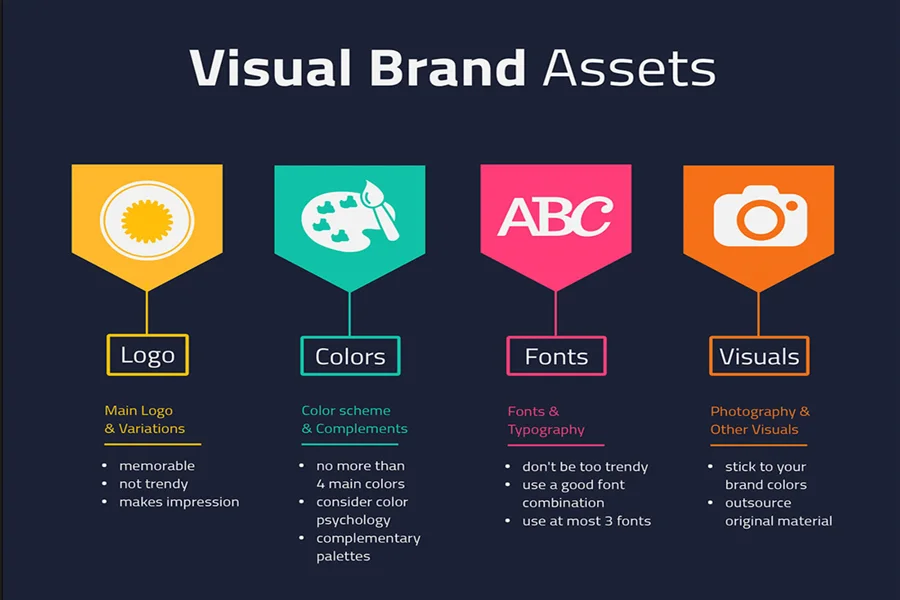
How Can Brand Identity Make or Break Your Business?
Whether entering a new market or diversifying the current business, a competitive advantage sets you apart. It lets you mold your pricing strategy and carry out promotional discounts. Brand identity helps to convey this competitive advantage.
It emotionally links a bond between the product and the audience and builds brand loyalty. This is how BMW conveys its USP of strong design aesthetics and buttery smooth rides.
An emotionally linked brand identity makes your business sustainable and better customer-oriented. It keeps your brand at the forefront when consumers have multiple choices.
Do you have a competitive advantage? Use it to build a punchy brand identity.
What is Corporate Identity?
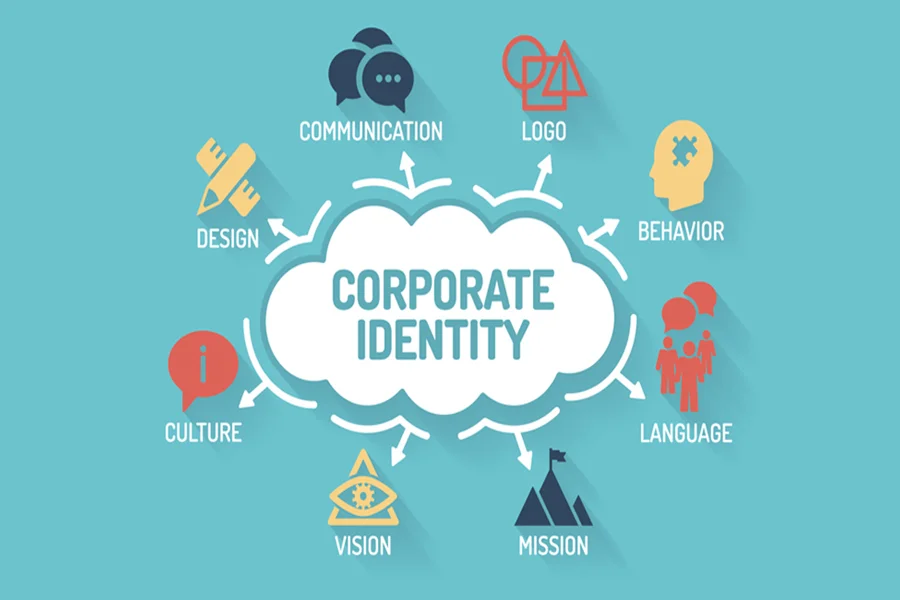
A corporate identity means how well consumers think of your organization. Does your logo spike the buying process without mentioning the name? Can your brand’s color scheme recall TOM (Top of the Mind) in your consumers? Does your company deliver the promised core values and philosophy?
If it does, you have a consistent corporate identity. A corporate identity means using coherent visual schemes in your logos, typography, slogans, business cards, and buildings that create a sense of familiarity amongst the consumers over time.
Importance of Corporate Identity
A strong corporate identity lets you build a strong internal and external consumer base. With the world turning into a global village, having a consistent, cohesive, and professional corporate identity is more important than ever to pave a sustainable road for your business. Here’s why corporate identity matter:
Professionalism:
Having a strong corporate identity sets your company as a professional brand. It communicates that a business is serious about what it’s promising.
Think of it. Would you prefer a poorly vague slogan over a compelling one? Absolutely not.
Emotional Connection:
A strong corporate identity is bound to more than visuals. It builds an invisible deep connection through mission values and brand commitment that help consumers better resonate with the company.
Trust Through Recognition:
When a company uses consistent corporate identity in terms of color schemes, mission values, and visuals, it can build better credibility with the target audience.
This is why consumers have a strong sense of loyalty when buying Nike’s products. They have a consistent corporate identity.
What is the difference between brand and corporate image?
The corporate and brand image both have a single aim, to boost the company’s brand and market value. But this is where the similarities end.
The difference between brand and corporate image is that a brand refers to the perception and reputation of a specific product or company among consumers, while corporate image represents the overall impression stakeholders have of the entire organization.
| Aspect | Corporate Identity | Brand Identity |
| Scope | Overall reputation of the company | Specific brand or product within the company |
| Elements | Mission, core values, slogans, color schemes | Unique brand attributes, positioning, associations |
| Focus | Long-term reputation and thought leadership | Short-term appeals and immediate consumer desires |
| Target Audience | Stakeholders: employees, investors, communities | Customers |
| Engagements | Building trust and credibility with stakeholders | Shaping customer perception of the brand |
| Timeframe | Long-term reputation | Short-term purchase decisions |
That’s the basic overview of how brand and corporate identity differs. Now, let’s delve deeper into the nitty-gritty.
Single Scope vs Diversified Scopes
A corporate identity portrays a company’s overall reputation in terms of its mission, core values, slogans, and color schemes. The focus is single, and all the marketing activities are aligned to position the company as a thought leader in the market.
For example, the corporate identity of Amazon is customer centric approach and a wide range of products. This is visible from their logo. That slanted arrow from A to Z hints at it.
On the other hand, the scope of brand identity targets specific brands or services. It varies from product line and is shaped by consumer preferences.
For example, the branding of classic coca cola targets every customer, while the diet coca cola provides a better emotional link with people having diabetes.
Long-term reputation Vs short-term appeals
Corporate identity is focused on long-term reputation. The goal is to present the company as a trusty and professional organization in the market which may take years.
Contrary to this, brand identity targets short-term appeals. It is positioned to create immediate desires in the minds of consumers to lead a purchase.
That’s why a company has the same slogan but its promotional campaign changes according to the trends.
Stakeholder Engagement vs Customer Loyalty
The target audience for corporate identity is mainly stakeholders, including employees, investors, and communities. It engages with these bodies and focuses on building trust and credibility with them.
Branding identity targets only customers. The marketing mix, promotional strategies, and marketing intelligence are aimed at “how customers perceive their brand.”
What Happens When Both Join Hands?
Apart from these differences, corporate and brand identity hold their places in the marketing puzzle. Without any of these, your marketing strategies will not succeed. But when they team up, you get
- Strong brand recognition.
- Increased customer loyalty.
- Competitive advantage.
- Trust and credibility.
- Employee alignment and pride.
- Consistent communication.
- Expansion and diversification opportunities.
- Attracting and retaining talent.
So it’s wise and profitable to use a blend of corporate and brand identity.
FAQs
Can I use my personal branding for my corporate identity?
Yes, you can sprinkle the elements of personal branding for your corporate identity. However, make sure that the objective and core values of your personal branding match that of your corporate identity.
What’s the point of having both corporate and brand identity?
A combo of corporate and brand identity completes your marketing picture. The corporate identity positions the overall company’s reputation, while the brand identity takes the load of marketing different product lines and company services.
Is having a consistent look and feel important across all my company’s branding materials?
Yes, it’s very important to maintain consistency while streamlining your branding strategies. Consumers are exposed to many brands; if you aren’t consistent, they might switch to another one.
Final Words
Why waste your valuable time and energy grappling with these complexities? Leave it to the true experts who have mastered the art of crafting brand identities and designs.
At Inkyy, we provide tailored branding services for your company that compete head-on with your competitors. With our unlimited design services, you’ll get everything for your brand crafted by professionals at a fixed price.
So why wait? Take advantage of our expertise and schedule a meeting now. It won’t take more than 30 minutes.
Don’t settle for average – let us unleash the full potential of your brand today.


